Advertisements
Advertisements
Question
Solution
APPEARS IN
RELATED QUESTIONS
In the diagram below, XX’ represents the principal axis, O the optical centre and F the focus of the lens. Complete the path of rays A and B as they emerge out of the lens.
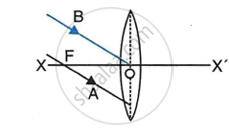 |
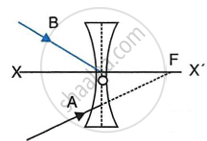 |
| (a) | (b) |
What type of lenses are used in spectacles worn by an old lady for knitting?
In the following diagram , the object and the image formed by the respective lenses are shown. Complete the ray diagram, and locate the focus. Find the focal length of the lens.

Make the rrect choices in the following items :
ln fig, , a real image of a point objert O is formed, Which of the following statements is true about each of the arrangements?
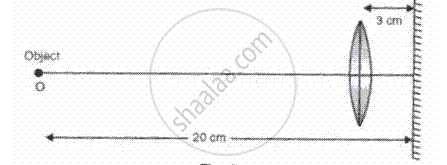
(i) The object is at the principle focus of the lens
(ii) The focal length of the lens is 17 cm
(iii) lf the mirror is moved so that it is 6 cm from the lens image will also move
(a)A ray of light is incident at 45° on the face of
(i) A rectangular block of glass.
(ii) A 600 glass prism.
(b) Draw a sketch showing how the ray of monochromatic ray of light passes through glass in each case.
(c) With the aid of a diagram, explain how the face of a right angled prism may totally reflect incident on it.
(d) A thick plane mirror produces several faint images in addition to a prominent one. Draw a ray diagram showing how reflection and refraction produce all these images.
(e) Fig. represents a stone S at the bottom of a pond of water. Using the two rays, as shown, complete the ray diagram to show where the image of the stone appears when viewed from E.

(f) What is a''mirage'? Explain with the help of a diagram.
(g) A man observes the bottom of a swimming pool of 3 m depth. If the refractive index of water is 1.3, what is the apparent depth of water?
(h) When a ray of light undergoes refraction through a glass slab and when it emerges it is displaced laterally (Fig). What are the factors on which the lateral displacement depends?
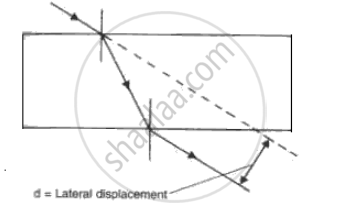
(i) Fig. shows three rays of light OA, OB and OC passing from water to air, making angles 490, 410 and 350 with the horizontal surface respectively. Draw an approximate path of the emergent ray for each. (Critical angle of water is 490.)
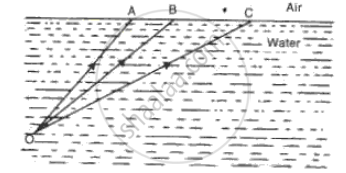
State the nature and position of the object on the principal axis to obtain a real and magnified image.
The diagram showed a lens as a combination of one glass block and two prisms. Complete the ray diagram and show the part of the incident ray AB after passing through the lens.
(i) Name of the lens formed by the combination.
(ii) What is the line XX’ called?
(iii) Mark the focus F.

In the following diagram, L1 and L2 are the two convex lense placed at separation equal to the sum of focal lengths of the two lenses. A and B are the two rays of light incident on the lens L1. Complete the path of rays till they emerge out of the lens L2.

What principles have you used in completing the diagram?
Draw a ray diagram to show the image formed by a convex lens when the object is placed between F and 2F.
